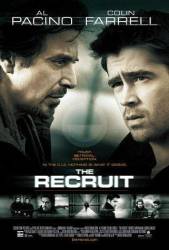Other mistake: Burke told Clayton that Langley's computers don't have printers. However, while Layla sits in Sharon's cubicle, just after Clayton walks by we see a printer behind Sharon on her desk. (01:09:13)
Other mistake: When Clayton shoots Zack, both the position of the gun and the location of the blood on Zack's jacket are about mid-torso on the left side. Yet not only is Zack shown to die in only 15 seconds, but Clayton does nothing to check pulse, breathing, pupils, or even the wound, which is inconsistent for this trained agent who didn't want to kill his friend; instead, he retrieves a paper from Zack's pocket and flees. (01:25:46 - 01:26:27)
Other mistake: Towards the end of the movie, Clayton has two wounds visible on his face. These wounds keep changing length and shape throughout the scene.






Suggested correction: A good number of mice and keyboards connect to the computers through the USB ports. If they took out all but two ports, and left those for the mouse and keyboard, it could be possible. If Leila pulled out the keyboard plug she could put in the USB device and copy the files. Heck, she could have even opened the computer up herself and installed a hidden USB drive (smuggling in the tools with her coffee mug of course). She would just have to be sneaky about it, and that's nothing unusual for these characters.
Not only is the original "Corrected entry" valid, it's understated. Burke actually said "Langley's computers don't have disk drives" - not just no floppy drive. In a high-security environment, such a system would be configured so that no USB port could communicate with an external drive; even more likely, the workstations would be dumb terminals - just keyboard, mouse, and monitor; and that's exactly what they appear to be in Layla's office area. So, showing a USB port built into Layla's keyboard and communicating with a USB drive belies a major part of Burke's story, and if Layla were able to do that, the system would immediately "see" it. It's the ersatz "Correction" that's mistaken, since it describes only ordinary commercial computer systems.